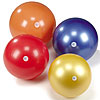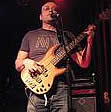| |
Self Help
|
| |
Here are some simple self help ideas that you can try on your
own to help with back pain or help prevent injuries. Remember,
the information here is not meant to diagnose or treat
your condition. Always consult with a health care physician,
ie., Chiropractor, M.D., etc. for a complete workup.
Let us know if these tips are helpful or if you have a topic you would like us to address here.
Back Packs
I know a lot of you have kids in school, or you are in school, or you wear a back pack yourself, so this might be interesting.
- It is advised that individuals carry no more than 15% of their body weight on their backs.
- Distribute the weight evenly. Put the heavier items on the bottom to keep the weight off of your shoulders and maintain better posture.
- Wear both shoulder straps unless your pack is designed for use on one shoulder. Carrying a heavy backpack using one strap can shift the weight to one side, which can lead to neck and muscle spasms, low back pain and walking improperly
- Choose backpacks that have heavily padded shoulder straps and a lumbar support. Nonpadded straps dig into the shoulders causing pain due to compressional loading of the acromioclavicular joints and stress on the trapezius muscles.
- Choose a backpack that has a lumbar cushion. The lumbar cushion will redistribute weight to the lower extremities, creating a fulcrum that facilitates an upright standing position.
- Lift it right. Bend your knees when picking up a heavy backpack.
- Carry only what is needed. Every extra item adds weight!
Beds and sleeping
We spend about 8 hours every night just laying there in bed. This will definitely affect the health of our spines. You should only sleep on your back or you side, period. As far as what kind of bed to buy, get one that is the firmest you can comfortably handle. It really is personal preference, so i can't recommend brands. Avoid any hammock like bedding, and if you have a traditional mattress, remember to turn and flip it on a regular schedule.
Car Seats
While sitting with the seat way back and low may look cool, it is definitely not cool for the back. You want your seat as upright and close to the wheel as possible. This will help minimize any rounding of the low back. When we sit with our low back rounded instead of a nice "C" curve, we loss the protection of the lumbar joint mechanics. So, sit up in your car and take some of the stress off the low back.
Computer Stations
Most of us work all day in front of a computer, so good work station habits are a must for a healthy spine. You should always have your monitor right in front of you where the top of the screen, not the monitor, is at eye level. If you have a larger screen, 19" or more, this would have to change to a few inches below the top of the screen. The idea is that you aren't cranking your neck up or down all the time.
Laptops - Laptops inherently are bad for your neck. The screens are simply too low. They really are made for mobility, not ergonomics. A way to fix that is to put your laptop up on books or something to raise the monitor to the right height. Then get an external USB mouse and keyboard and you will be all set. An alternative is a docking station, but they are a lot more expensive.
Exercise Balls
 |
Exercises balls seem to be all the rage lately in fitness. They are a great way to gently stretch and strengthen the spine. Don't get too crazy with balancing on them. A fall is going to hurt your back a lot more than not doing acrobatic core training. |
Icing
 |
Icing is one of the best things you can do at home for acute pain. Icing helps
reduce inflammation and numbs the area. This helps reduce
pain and speed healing. You should ice the painful area
about 15-20 minutes every few hours. All you need is 15-20 minutes
so don't overdo it. You should also not ice bare skin,
use a shirt or towel. |
Musicians
 |
Dr. Cass at the Fine
Line Music Cafe, MN |
|
Dr. Cass know's from both personal and clinical experience, it's not easy being a musician. Holding your instruments during hours of practice, sitting at the drums, and lugging gear around town, all take their toll on your back and joints. The older you get, the more you will notice it, but the stress is there even when you're younger. Regardless of your age, there are a lot of things you can do to help ease the stress on the body, and ultimately, help you be a better player. Here's a few healthy tips for musicians, and hopefully we will devote more pages to this topic in the future.
|
 |
Bass and Guitar |
| |
stretching |
|
You need to stretch before and after a gig. Most musicians are too embarrassed to stretch. It may not seem cool, but you have to start thinking like a pro athlete. You don't have to put your leg up on the bar, just some light neck, back and wrist stretches will help. |
| |
guitar setup |
|
Keep your action as low as possible and your strings as light as possible. I know what you're saying, and yes it will be a compromise between ergonomics and the tone you are going for. But the less you have to fight the guitar the better off you will be in the long run. |
| |
guitar position |
|
Most instructors say to have your guitar in the same position as if you were sitting down playing it. This usually puts the least amount of stress on the wrists and elbows. Once again, it may not look the coolest, but cool comes from confidence and your ability to play. |
| |
amps |
|
Do you really need that Marshall or Ampeg full stack? Would a half stack or combo work just as well. With modern amps, it is possible to have a smaller setup and still get a huge sound. Until you get roadies, keep it light and portable. |
 |
Drums |
| |
keep it close |
|
Just pull everything in as close as possible. It may seem weird at first, but the idea is to minimize reaching for cymbals or toms. |
| |
thrown |
|
There is much debate over the drum thrown, should it have a back or not. This is tricky because of different kick drum styles, but we usually recommend no back. You want to sit up nice and straight and not have to reach for your drums (see above). |
| |
lighten the kit |
|
Same as with guitar and bass amps above, do you really need all those toms, cymbals, racks, etc.? Some of the best drummers around have a super small setup. It's a compromise between sound and portability, but after a few gigs your back will thank you (and so will the sound person). |
Snow Shoveling
 |
Snow shoveling is an inevitable part of living in Minnesota. Worse than being no fun, it's extremely hard on the low back. Anytime you lift and twist you are leaving the low back vulnerable to injury. Short of using a snow blower or getting someone else to shovel, the best shoveling practice is to use your legs and not twist. We recommend one of those angled shoves that let's you stand straighter when pushing. You should only push straight and lift up and place the snow in a pile straight ahead. It may not be the fastest way to shovel, but it's the least damaging to the low back. And remember to always stretch before and after shoveling.
Rumor has it, hot chocolate and a warm blanket helps a little too. |
Stretching
Stretching is very important to help prevent injuries and
keep the joints more supple. Stretching of acute injuries
is not advised as further damage may occur. Always stretch
slowly without jerking. You should do a 10 minute warm
up before you stretch. Stretching cold muscles is not a
good idea because it increases the risk of injury, plus
the stretching will not be as effective. The big thing
with stretching is not to rush it, and don't jerk. Slow and steady wins the race.
More
self help ideas coming soon. Please bookmark and check
back.
|
|
| M-F: |
9am - 7pm |
| Sat: |
9am - 2pm |
 |


